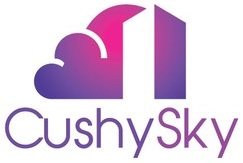Executive Summary:
The journey from legacy ERP systems to modern cloud-enabled operations doesn’t always begin with a full system replacement. Increasingly, organizations are evolving their ERP platforms through a combination of infrastructure modernization, cloud application adoption, and people-centric change leadership.
This white paper explores how businesses are modernizing Oracle E-Business Suite (EBS) and transitioning to Oracle Fusion Cloud Applications — either fully, partially, or via hybrid models. It also emphasizes the role of leadership and organizational alignment in making these transformations successful and sustainable.
Drawing from technical, operational, and human change insights, the paper offers a balanced view of modernization that protects existing investments while preparing the enterprise for long-term agility and innovation.
1. Rethinking Legacy: EBS Is Not the Problem — Stagnation Is
Oracle E-Business Suite continues to serve as the operational backbone for many enterprises. In fact, the latest EBS 12.2 releases, when coupled with Oracle Cloud Infrastructure (OCI), offer:
-
Stability through Premier Support extended to at least 2036
-
Enhanced automation (e.g., online patching, lifecycle management)
-
Modern integration tools like REST APIs and Oracle Integration Cloud (OIC)
-
Extendability with Oracle APEX and AI integrations via OCI
For organizations not ready to leave EBS behind, this presents an opportunity to modernize in place — automating operations, enabling self-service, and improving integration without disrupting core business processes.
“Innovation doesn’t always require replacement. EBS can evolve, integrate, and extend — especially when powered by Oracle Cloud Infrastructure.”
2. When It’s Time to Evolve Beyond EBS: The Case for Fusion Applications
Some businesses eventually outgrow their legacy ERP stack. New requirements — global expansion, cross-functional visibility, embedded intelligence — often point to the need for a cloud-native platform like Oracle Fusion Cloud Applications, which offers:
-
A unified data model across finance, HR, supply chain, and customer experience
-
Embedded AI, automation, and real-time analytics
-
Seamless quarterly updates to stay continuously modern
-
Modular adoption, enabling a phased transition from EBS or other systems
Oracle Fusion doesn’t have to replace EBS entirely on day one. Fusion can coexist with EBS, allowing businesses to gradually shift functionality while retaining mission-critical capabilities.
3. Modernization Isn’t Binary: Coexistence Is a Strategic Option
The modernization journey isn’t an either/or decision. Many organizations are adopting hybrid strategies to bridge EBS and Fusion through:
-
Selective module adoption: Implementing Oracle Fusion Planning, Procurement, or HCM alongside core EBS Financials
-
APEX-powered extensions: Creating modern UIs and self-service tools on top of EBS data
-
AI-enablement: Using OCI’s Select AI and APEX to enable natural language queries within EBS
-
Automation and monitoring: Leveraging OCI-native tools for patching, cloning, and operational efficiency
This coexistence model reduces risk, accelerates time-to-value, and allows leadership teams to manage transformation on their own terms.
4. The Critical Ingredient: Human-Centered Change Leadership
Regardless of platform or pace, digital transformation hinges on people — not just technology.
According to recent research, up to 70% of large-scale IT transformations fall short of expectations — largely due to misaligned leadership, poor communication, and inadequate employee engagement.
The most successful Oracle transformations incorporate:
-
Proactive leadership alignment: From executive sponsors to process owners
-
Change champions across business functions
-
Clear “why” narratives to explain the purpose behind the transformation
-
Continuous engagement, not just during go-live
The Me-We-Us Framework
Borrowed from leading change methodologies, this framework helps organizations balance:
-
Me – Individual concerns and motivations
-
We – Team dynamics and collaboration
-
Us – Enterprise-wide goals and shared success
By articulating value at every level, leaders create space for participation — not resistance.
5. Getting Practical: A Maturity-Based Approach to Oracle Transformation
No two transformation journeys are the same. Organizations benefit from assessing where they are today and mapping realistic next steps.
| Current State | Next Step Options |
|---|---|
| Running EBS on-prem | Move to OCI for lower TCO and automation tools |
| EBS with manual integrations | Use Oracle Integration Cloud (OIC) for seamless connections |
| EBS with functional gaps | Add Fusion Planning, HCM, or Procurement |
| Custom-heavy EBS | Shift extensions to APEX for agility and patch safety |
| Limited analytics | Adopt Fusion Analytics or embed OTBI in HCM/ERP |
| Culture change fatigue | Embed Me-We-Us change model to drive adoption |
The right path forward blends technical strategy with organizational readiness — and evolves over time.
6. Sustaining Change: From Deployment to Continuous Improvement
Transformation doesn’t end at go-live. Sustained success requires ongoing attention to:
-
Quarterly innovation cycles (in Fusion Cloud)
-
Release readiness and change impact planning
-
Monitoring adoption and usage metrics
-
Coaching leaders and teams to build internal capability
-
Using lessons learned to inform future rollouts
Organizations that embed change into how they operate — not just what they deploy — build greater resilience and adaptability for the future.
Conclusion: From Legacy to Leadership, on Your Own Terms
Not every organization needs to rush into full ERP replacement. But few can afford to stand still.
Whether you modernize Oracle EBS in place, adopt Oracle Fusion Cloud, or combine both strategies, success depends on a deliberate approach that connects systems, people, and goals.
At CushySky, we support clients through the entire lifecycle — from infrastructure decisions and module adoption to user enablement and long-term optimization. Our role is not just to implement Oracle technologies — but to help your organization use them to lead.
Let’s start where you are — and work toward where you want to go.


